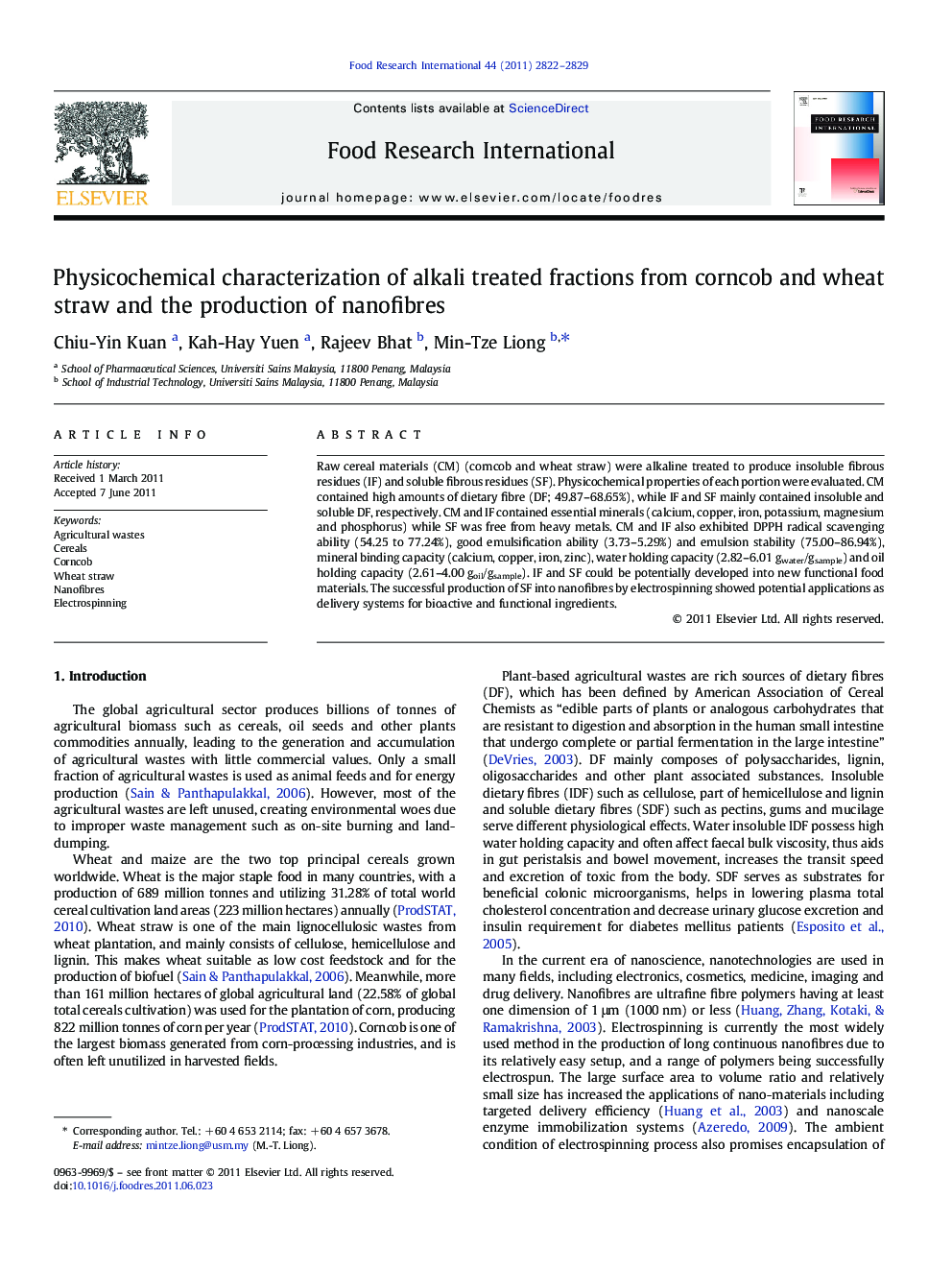| Article ID | Journal | Published Year | Pages | File Type |
|---|---|---|---|---|
| 4562106 | Food Research International | 2011 | 8 Pages |
Raw cereal materials (CM) (corncob and wheat straw) were alkaline treated to produce insoluble fibrous residues (IF) and soluble fibrous residues (SF). Physicochemical properties of each portion were evaluated. CM contained high amounts of dietary fibre (DF; 49.87–68.65%), while IF and SF mainly contained insoluble and soluble DF, respectively. CM and IF contained essential minerals (calcium, copper, iron, potassium, magnesium and phosphorus) while SF was free from heavy metals. CM and IF also exhibited DPPH radical scavenging ability (54.25 to 77.24%), good emulsification ability (3.73–5.29%) and emulsion stability (75.00–86.94%), mineral binding capacity (calcium, copper, iron, zinc), water holding capacity (2.82–6.01 gwater/gsample) and oil holding capacity (2.61–4.00 goil/gsample). IF and SF could be potentially developed into new functional food materials. The successful production of SF into nanofibres by electrospinning showed potential applications as delivery systems for bioactive and functional ingredients.
► Corncob and wheat straw were characterized upon alkaline treatment. ► Alkaline treatment was effective in separating dietary fibre from cereal wastes. ► Raw wastes (CM) and solid residues (IF) suitable in developing value added food. ► Liquid residues (SF) were successfully electrospun into nanofibres. ► SF are useful in bioactives delivery systems and functional food development.
